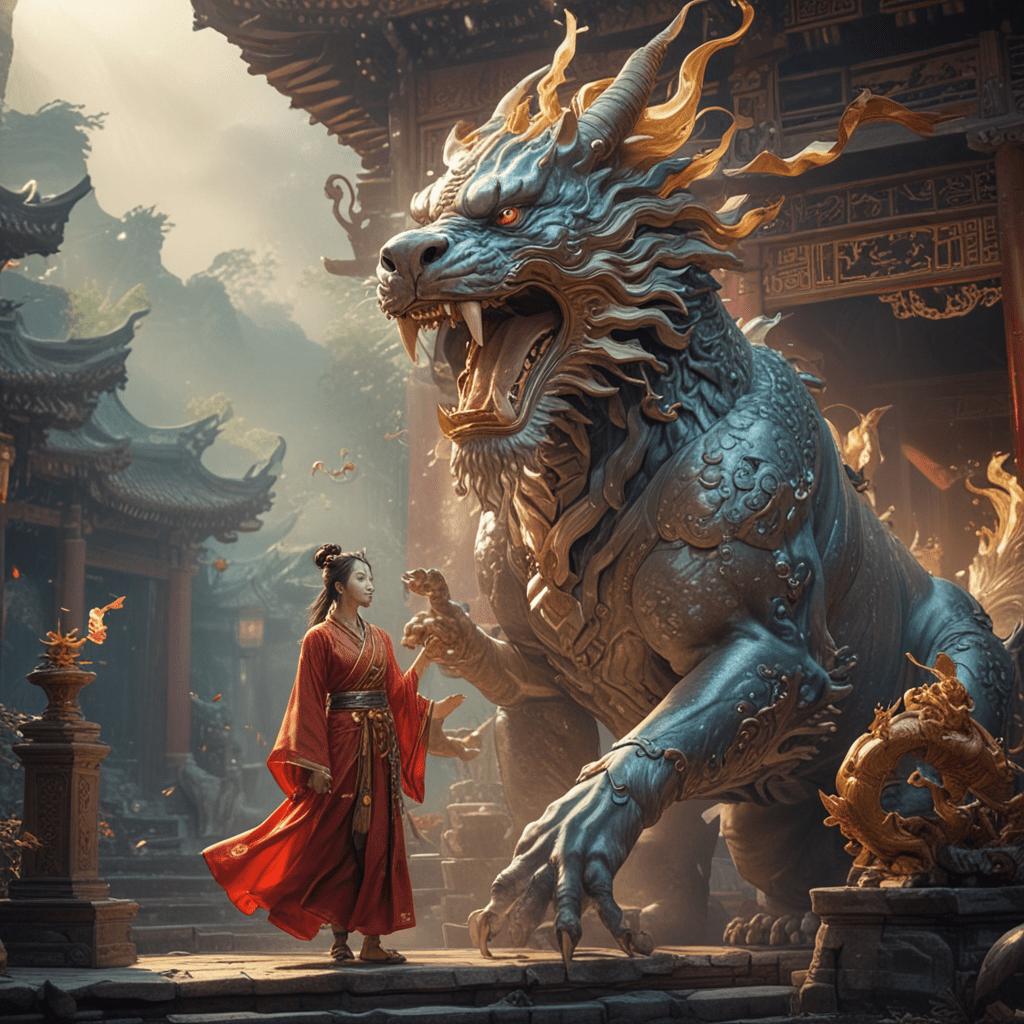The Origins of Chinese Mythology
Chinese mythology is a vast and complex tapestry of stories, legends, and beliefs that have been passed down through generations. These stories provide insight into the Chinese people's worldview and their understanding of the universe and their place within it. The origins of Chinese mythology can be traced back to ancient times, and many of the stories that are still told today have their roots in the earliest days of Chinese civilization.
The Creation Myth
The creation myth is one of the most fundamental stories in Chinese mythology. It tells the story of how the universe was created from chaos. In the beginning, there was nothing but a vast expanse of darkness and nothingness. Then, from this darkness, two beings emerged: Pangu and Nüwa.
The Pangu Myth
The Pangu myth is one of the most popular creation myths in Chinese mythology. It tells the story of how the giant Pangu emerged from a cosmic egg and separated the heavens and the earth. According to the myth, Pangu was born from a cosmic egg. When the egg hatched, Pangu emerged and grew so large that he reached the sky. He then used his axe to separate the heavens from the earth, creating the world as we know it.
The Nüwa Myth
The Nüwa myth is another popular creation myth in Chinese mythology. It tells the story of how the goddess Nüwa created humans. According to the myth, Nüwa was a goddess who was born from the tears of Pangu. She was so beautiful that she attracted the attention of the gods. They asked her to create a companion for them, and she did so by molding humans out of clay.
The Three Sovereigns and Five Emperors
The Three Sovereigns and Five Emperors are a group of legendary rulers who are said to have ruled China in ancient times. The Three Sovereigns are said to have been the first rulers of China, while the Five Emperors are said to have been their successors. These legendary rulers are credited with establishing many of the institutions and practices that are still used in China today.
The Xia Dynasty
The Xia Dynasty is the first historically-verified dynasty in Chinese history. It is said to have been founded by Yu the Great, who is credited with controlling the flooding of the Yellow River. The Xia Dynasty lasted for about 400 years, and it is during this time that many of the foundations of Chinese civilization were laid.
The Shang Dynasty
The Shang Dynasty is the second historically-verified dynasty in Chinese history. It is said to have been founded by King Tang, who overthrew the Xia Dynasty. The Shang Dynasty lasted for about 600 years, and it is during this time that many of the characteristic features of Chinese civilization emerged, including the development of writing, the use of bronze, and the rise of a powerful centralized state.
The Zhou Dynasty
The Zhou Dynasty is the third historically-verified dynasty in Chinese history. It is said to have been founded by King Wu, who overthrew the Shang Dynasty. The Zhou Dynasty lasted for about 800 years, and it is during this time that Chinese civilization flourished. The Zhou Dynasty is known for its advances in philosophy, literature, and the arts. It is also during this time that the concept of the Mandate of Heaven was developed, which justified the rule of the emperor.
The Spring and Autumn Period
The Spring and Autumn Period is a period of Chinese history that lasted from 771 to 476 BC. It is a time of great political and social upheaval, and it is during this time that many of the great Chinese philosophers lived. The Spring and Autumn Period is also known for its advances in military strategy and the development of new weapons.
The Warring States Period
The Warring States Period is a period of Chinese history that lasted from 475 to 221 BC. It is a time of great political and military conflict, and it is during this time that the seven major states of China emerged. The Warring States Period is also known for its advances in technology and the development of new forms of government.
The Qin Dynasty
The Qin Dynasty is the first unified dynasty in Chinese history. It was founded by Qin Shi Huang, who overthrew the last of the Warring States. The Qin Dynasty lasted for only 15 years, but it is during this time that many of the foundations of the Chinese empire were laid. The Qin Dynasty is known for its authoritarian rule, its massive public works projects, and its legal reforms.
FAQ
What are the main themes of Chinese mythology?
The main themes of Chinese mythology include the creation of the universe, the origin of humans, the nature of good and evil, and the role of destiny in human life.
What are some of the most popular Chinese myths?
Some of the most popular Chinese myths include the Pangu myth, the Nüwa myth, the Three Sovereigns and Five Emperors myth, and the Journey to the West myth.
How has Chinese mythology influenced Chinese culture?
Chinese mythology has had a profound influence on Chinese culture. It has shaped the Chinese people's worldview, their understanding of the universe, and their values. Chinese mythology has also been a major source of inspiration for Chinese art, literature, and music.



